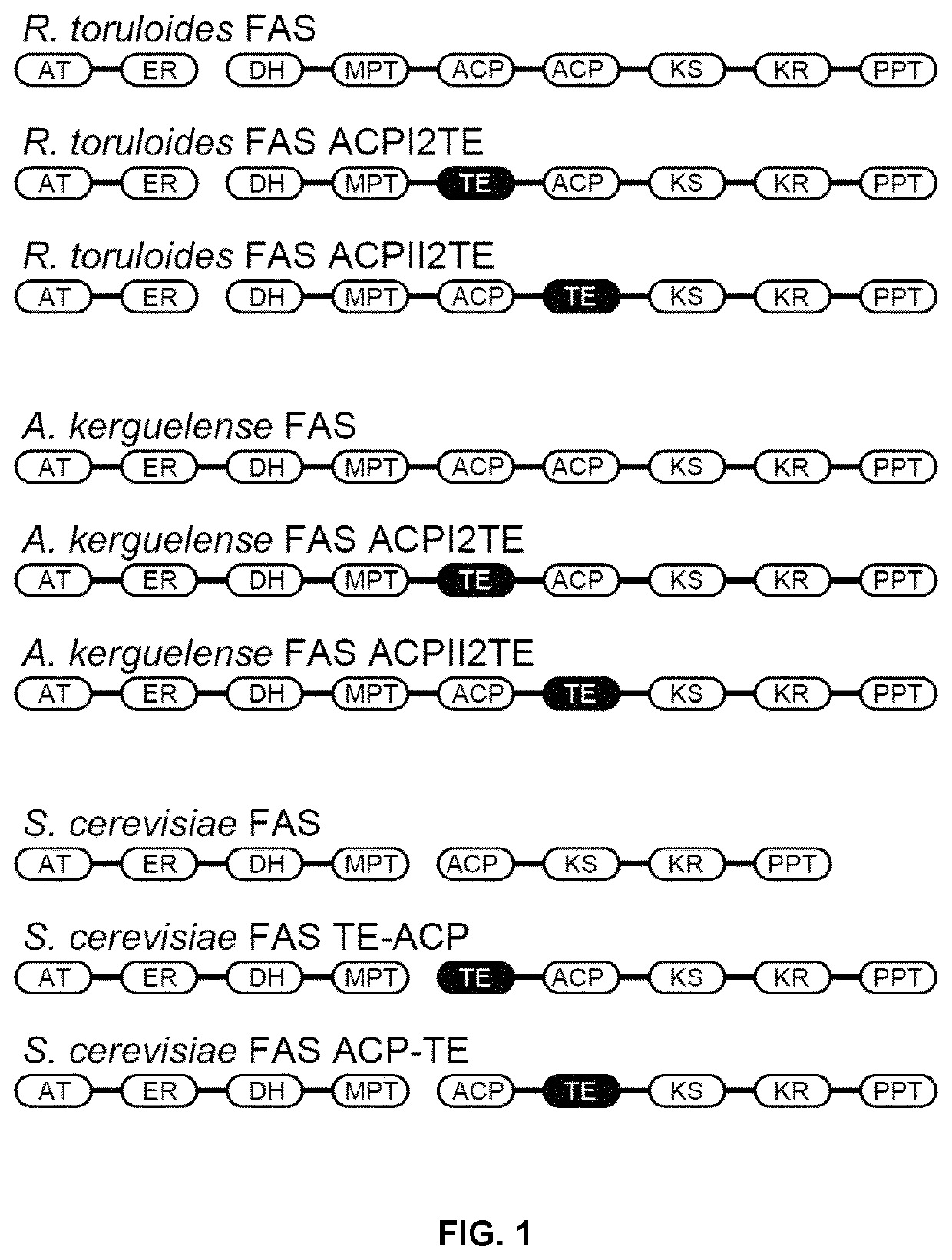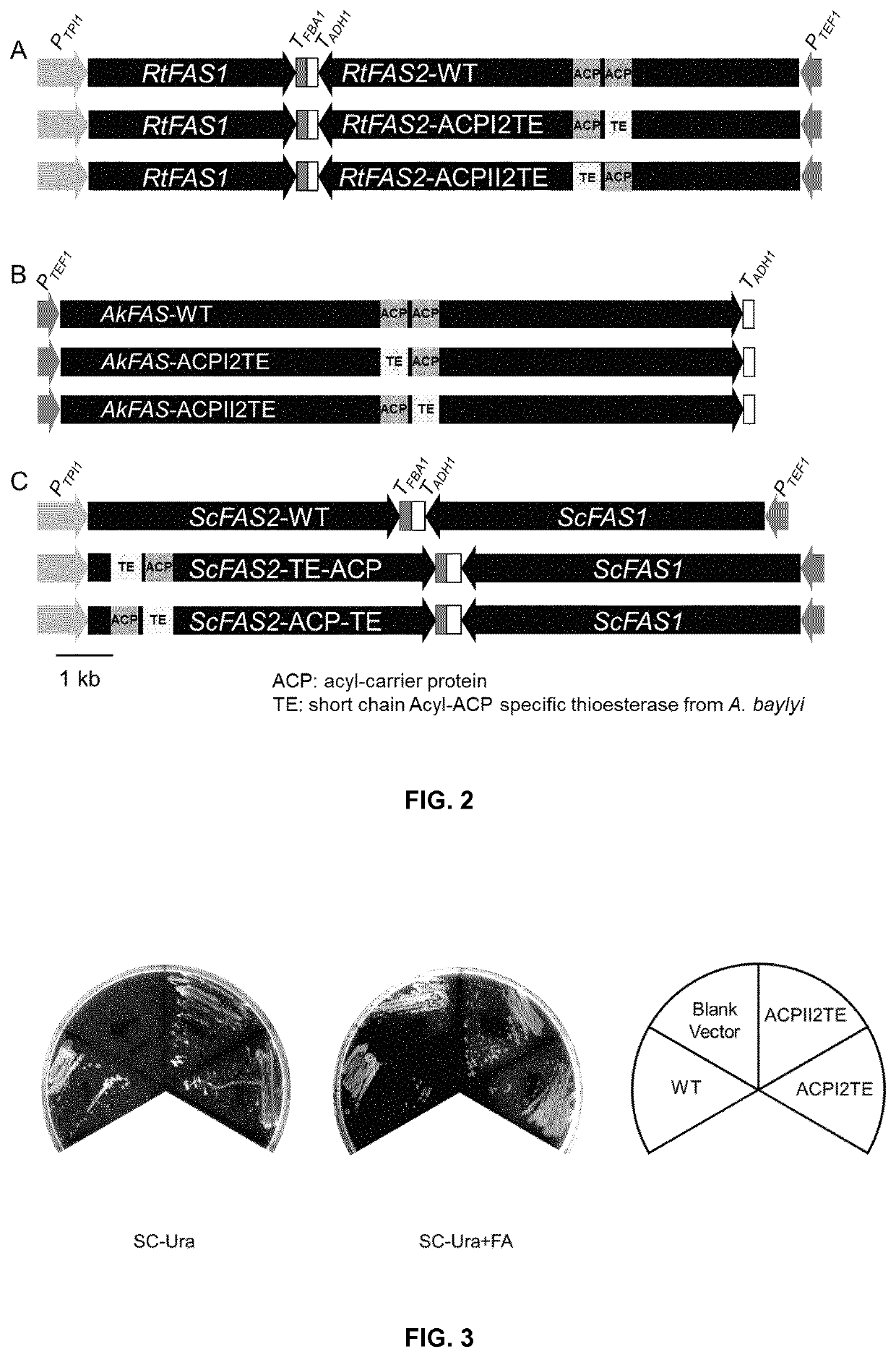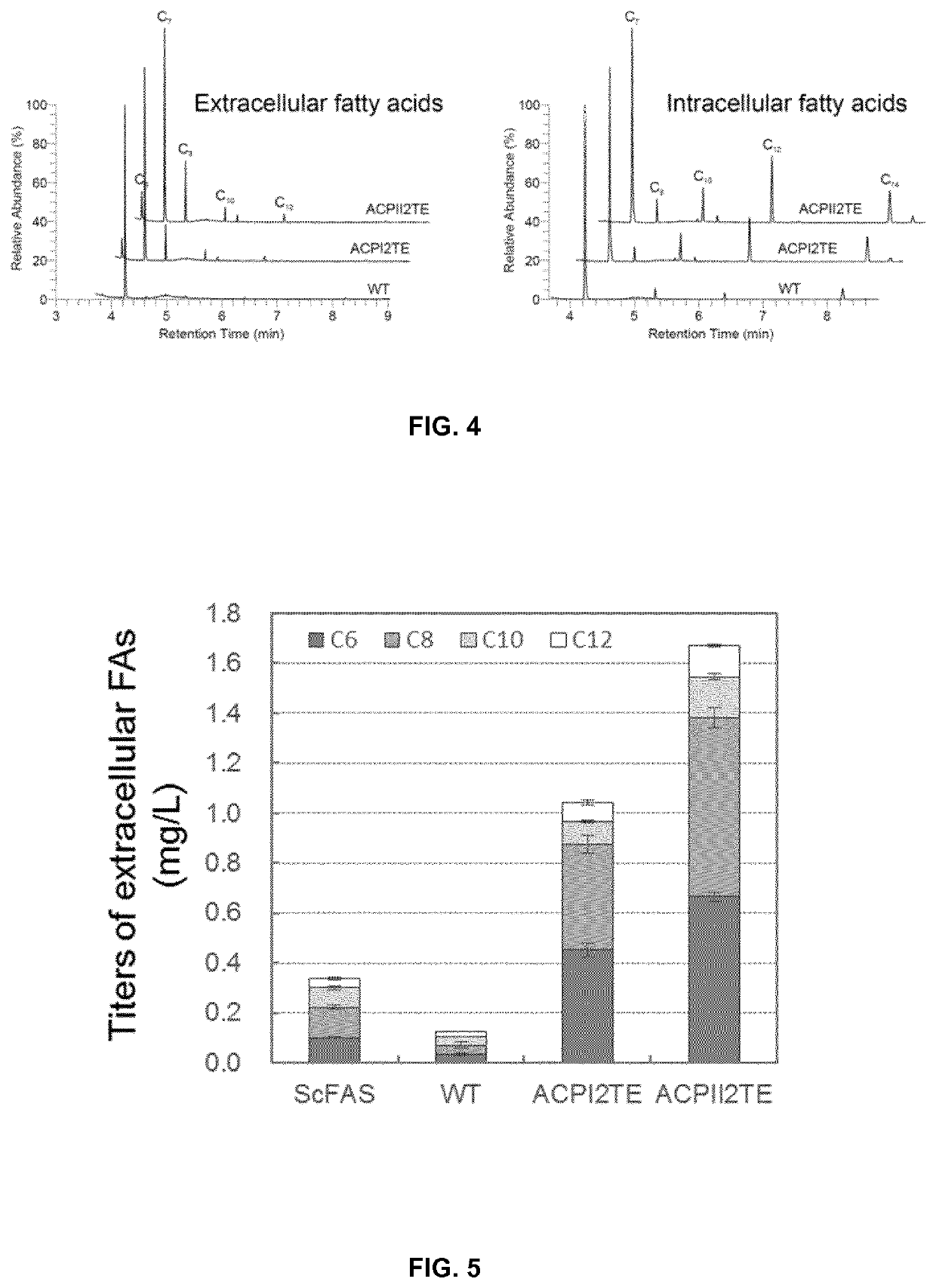Method of producing fatty acids
a technology of fatty acids and fatty acids, which is applied in the direction of peptides, transferases, peptide sources, etc., can solve the problems of limited availability in the world of these compounds, and achieve the effect of deteriorating the structure and activity of the fas (subunit) and affecting the functionality
- Summary
- Abstract
- Description
- Claims
- Application Information
AI Technical Summary
Benefits of technology
Problems solved by technology
Method used
Image
Examples
example 1
of the FAS Encoding Genes or cDNA
[0178]The cell pellets harvested from 1 ml culture broth of Rhodosporidium toruloides in YPD medium (10 g / L yeast extract, 20 g / L peptone, and 20 g / L glucose) were immediately frozen in liquid nitrogen and stored at −70° C. Total RNA was isolated from about 30-50 mg cell samples using the FastRNA Pro Red Kit and FastPrep Instrument (Qbiogen, Inc., Irvine, USA) following the manufacturer's instructions, and the setting of FastPrep Instrument was 6.0 m / s for 60 s. The RNA concentration and quality were determined by Nanodrop ND1000 Spectrophotometer (ThermoFisher Scientific), while the RNA integrity was assessed by agarose gel electrophoresis. cDNA was synthesized by PrimeScript™ High Fidelity RT-PCR Kit (Takara Bio Inc.). Genomic DNA of Saccharomyces cerevisiae and Aplanochytrium kerguelense were extracted as described before (Burke, D., Dawson, D. & Stearns, T. (2000) Methods in yeast genetics: a Cold Spring Harbor Laboratory course manual, Cold Spri...
example 2
ion of Recombinant Plasmids Expressing FAS and its Mutants
[0179]The fragments containing gene promoters and terminators of Saccharomyces cerevisiae was amplified from the genomic DNA of Saccharomyces cerevisiae CEN.PK113-11C (MATa SUC2 MAL2-8c ura3-52 his3-Δ1, kindly provided by P. Kötter, University of Frankfurt, Germany) or plasmids previously constructed (Buijs, N. A., Zhou, Y. J., Siewers, V. & Nielsen, J. (2015) Long-chain alkane production by the yeast Saccharomyces cerevisiae, Biotechnol Bioeng. 112, 1275-1279). And plasmids for expression of FAS complex in yeast were constructed by DNA assembler (Shao, Z., Zhao, H. & Zhao, H. (2009) DNA assembler, an in vivo genetic method for rapid construction of biochemical pathways, Nucleic Acids Research. 37, e16. and Zhou, Y. J., Gao, W., Rong, Q., Jin, G., Chu, H., Liu, W., Yang, W., Zhu, Z., Li, G., Zhu, G., Huang, L. & Zhao, Z. K. (2012) Modular Pathway Engineering of Diterpenoid Synthases and the Mevalonic Acid Pathway for Miltirad...
example 3
Verification of the FAS Genes
[0182]The recombinant plasmids expressing FAS encoding genes or ORFs were transformed into FAS deficient strain PWY12 (MATα ura3 leu2 his3 trp1 cant Δfas1::HIS3 Δfas2::LEU2, Wenz, P., Schwank, S., Hoja, U. & Schüller, H.-J. (2001) A downstream regulatory element located within the coding sequence mediates autoregulated expression of the yeast fatty acid synthase gene FAS2 by the FAS1 gene product, Nucleic Acids Research. 29, 4625-4632.) by a lithium acetate / single-stranded carrier DNA / polyethylene glycol method (Daniel Gietz, R. & Woods, R. A. (2002) Transformation of yeast by lithium acetate / single-stranded carrier DNA / polyethylene glycol method, Methods Enzymol. 350, 87-96.). 0.5 mM palmitic acid and 0.5 mM stearic acid (5 mM stock solution in TWEEN 80 / ethanol=1:1) were supplemented in the media if needed. The YPD medium with fatty acids was used to culture PWY12 for the transformation, the transfomants were selected on SC-URA+FA medium plates (6.7 g / L...
PUM
| Property | Measurement | Unit |
|---|---|---|
| volume | aaaaa | aaaaa |
| OD | aaaaa | aaaaa |
| temperature | aaaaa | aaaaa |
Abstract
Description
Claims
Application Information
 Login to View More
Login to View More - R&D
- Intellectual Property
- Life Sciences
- Materials
- Tech Scout
- Unparalleled Data Quality
- Higher Quality Content
- 60% Fewer Hallucinations
Browse by: Latest US Patents, China's latest patents, Technical Efficacy Thesaurus, Application Domain, Technology Topic, Popular Technical Reports.
© 2025 PatSnap. All rights reserved.Legal|Privacy policy|Modern Slavery Act Transparency Statement|Sitemap|About US| Contact US: help@patsnap.com



